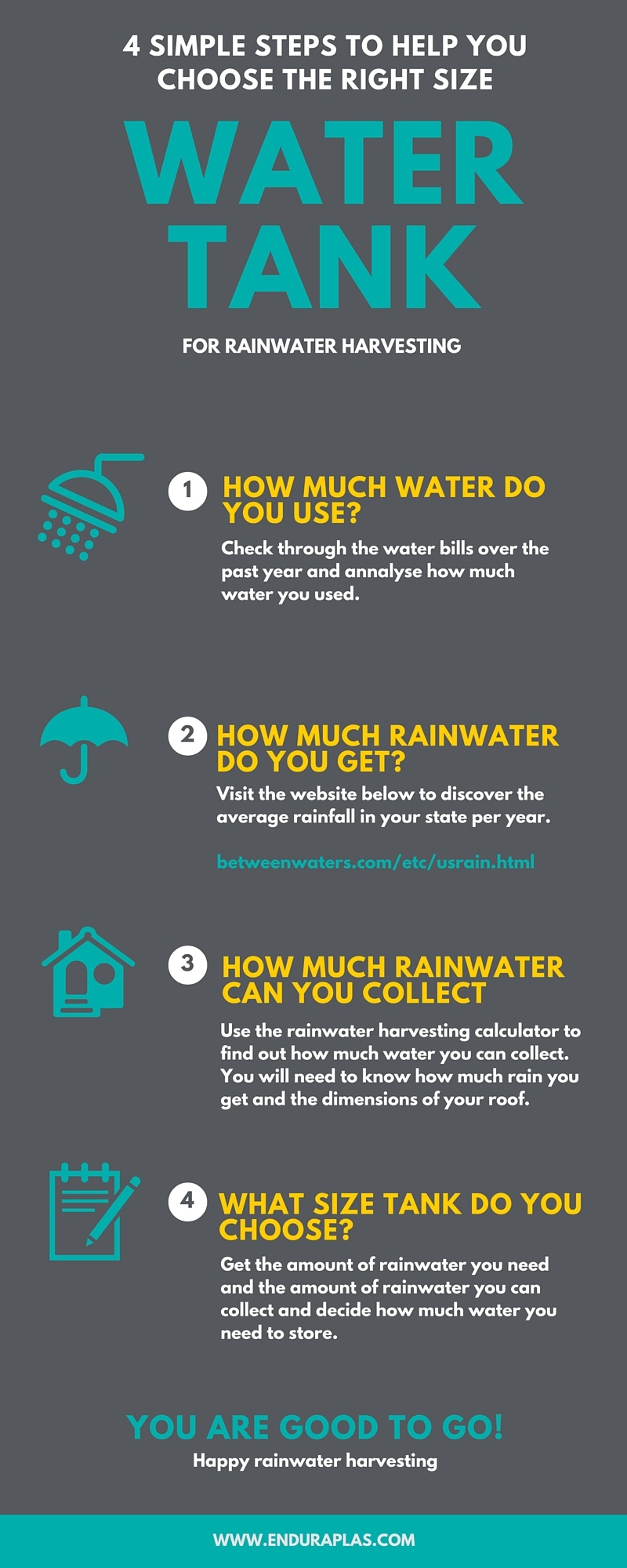
So how do you figure out what size rainwater harvesting tank you need?
A rainwater harvesting tank can be used in many different ways. For example, you may be setting up a rainwater harvesting system at your home for irrigating your lawn. Another popular use is collecting rainwater on your ranch for watering livestock. Although I am not a rainwater harvesting guru, I have gathered information from many customers that have asked questions regarding this issue. To simplify this process on what is the best size tank to choose, I created an easy to follow infographic below.

You may now be wondering how to figure out how much water you can collect from your roof. To make you feel better I would like to share that, a very popular question throughout the water tank industry is exactly that. There is a simple equation you can use to calculate the amount of water you can expect to capture from your roof over a one-year period.
Find your annual rainfall and calculate how much water you can collect with your roof:
There are a few good websites that you could visit to calculate how much water you can capture. Click here to view my favorite website.
Now that you know what size tank you need, the final thing you should consider is how much space you have for your tank. This will determine how large of a tank, or at least the type of tank you purchase. There are several styles of rainwater harvesting tanks available. To make it easy to choose the best water tank for your use, I included some very important information.
3 must-haves for a rainwater harvesting tank:
- Opaque color - Eliminates algae growth. To emphasise this, I would encourage you to read a blog I wrote recently. Plastic Water Tanks: Does the color matter? [Blog]
- Dormers in roof - Extra spots for fittings. This is extremely important for a rainwater harvesting tank as there needs to be enough room for overflow pipes.
- Solid construction - Ribbed side walls and molded roof supports. These 2 features are important to a water tank that needs to last for many years to come.
Now that you know all the details of a rainwater harvesting tank and what you need to look for, it's time to consider any other issues that could arise. Like algae growth.


